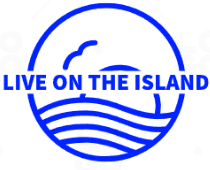ALIVE - E COURSE -EN
Digital content development.
A digital content is any information that can be stored, transmitted, or processed through electronic devices or computer networks. Digital content can take various formats such as text, image, audio, video, animation, etc. Some examples of digital content include documents, presentations, web pages, blogs, podcasts, videos, games, applications, etc.
Not all digital content found on the internet is reliable. Some characteristics of low-quality or unreliable digital content include:
Containing false, inaccurate, or outdated information, even when widely disseminated.
Being biased, manipulated, or distorted by particular interests or ideologies, leads to misinformation.
Violating copyright or intellectual property rights of other individuals or entities.
Threatening the privacy, security, or reputation of the individuals or entities involved.
Inciting hatred, violence, or discrimination towards any group or collective.
Considering the above, before using digital content, it is essential to evaluate it as a reliable source based on certain characteristics, such as:
Authorship: who is the author or entity responsible for the content, their background, experience, or reputation in the subject, and their motivation or intention in publishing the content.
Date: when the content was created or last updated, its currency, and its relevance to the temporal context of the search.
Source: where the content comes from, whether it is original or derived from other sources, if it correctly cites and references its sources, and if it can be cross-referenced with similar or different sources.
Veracity: whether the content is true or false, if it is based on proven facts or opinions, and if it presents evidence or arguments supporting the information.
Relevance: whether the content is pertinent to the search, whether it covers the topic comprehensively or partially, whether it provides new or repeated information, and whether it has an appropriate level of depth or complexity for the purpose of the search.
After understanding the importance of evaluating or determining the quality of digital content that we select as relevant, a series of reliability criteria for the mentioned digital content and the websites that disseminate them are presented:
Authority: This refers to the identification and assessment of the author or source of the digital content, including their reputation, credibility, and expertise in the subject.
Timeliness: It indicates the frequency or date of the last update. Clearly, the currency and relevance of the content will make it more reliable. Websites of news media are examples of a proper updating policy, often with multiple daily editions.
Accuracy: This involves verifying the correctness and precision of digital content, as well as its internal and external coherence and consistency. Sometimes, indicators of quality include the presence of more advertising content than editorial, citation of other sources, reference to specific data such as dates, authors, statistics, absence of factual errors, clear distinction between opinion and information, etc. Spelling errors and a careless style can also be indicative of poor quality.
Editing: It reflects the care with which the information has been treated at each stage of the elaboration process before being published. For example, Wikipedia.
Systematization: As a quality criterion for digital content, it refers to the organization, structure, and presentation of content in a clear, coherent, and orderly manner.
Intrinsic Interest: It relates to the value, relevance, and utility of the content for the target audience, capturing their attention, curiosity, and motivation.
Objectivity: This refers to the neutrality, impartiality, and truthfulness of the content, unaffected by personal opinions, interests, or biases.
Originality: It is related to the novelty, creativity, and innovation of the content, ensuring it is not a copy or reproduction of existing content. An example of original digital content would be an artistic or literary work expressing the author's personal and unique vision, not based on previous works or significantly transforming them.
Reflection: Is there any formula for achieving success in digitalization processes?
The first thing we must consider is that the key lies in improving the user experience, which is at the centre of all innovations.
